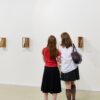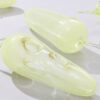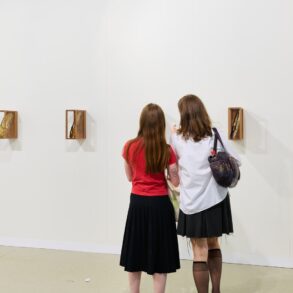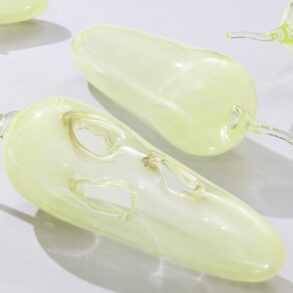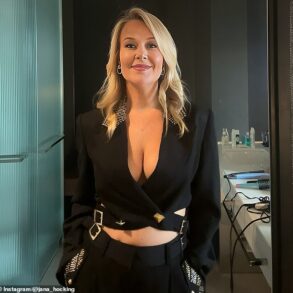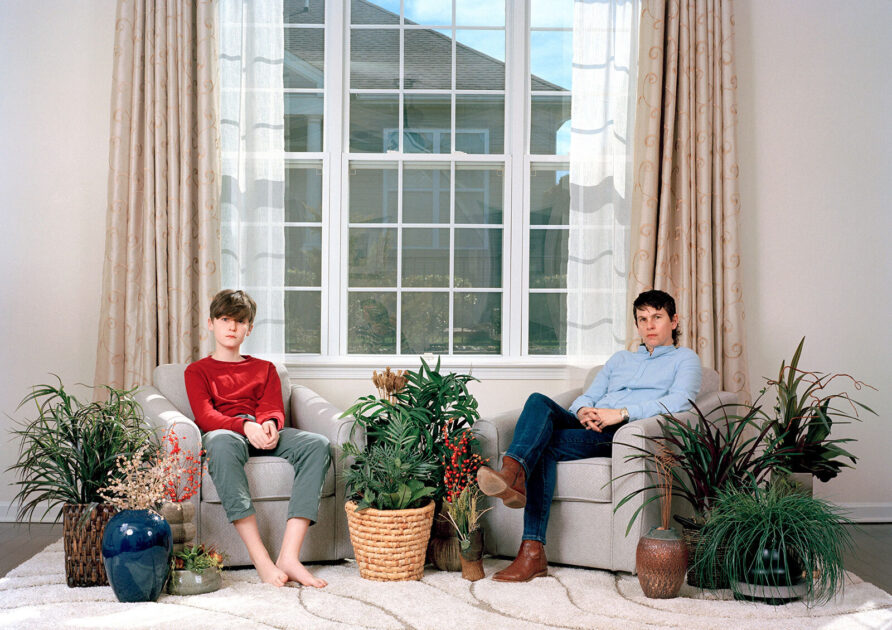
The first time I encountered work by the visual artist and scholar Leah DeVun, it was photographs from her Lesbian Land (2010–) project. The images in that series depict both people and structures from a cross section of the remaining lesbian-centered intentional communities scattered across the rural United States. I first saw the work a little over a decade ago when I was just starting my documentary film All We’ve Got, which focuses on physical spaces around the country that center LGBTQ+ women. I was really glad to find another person looking at queer spaces that weren’t bars and who was keen to bring the contemporary reality of these communities into conversation with the widespread interest in the archival representation of their past.
What was most striking for me about Lesbian Land was the way the portraits of the people and the portraits of the highly idiosyncratic structures they were always in the process of constructing carried equal weight. Looking at the photographs, you’re left wondering how the people and the buildings reflect one another, what each reveals about the other, and the possibilities and limits embodied and embedded in each. DeVun is incredibly adept at creating productive tensions in her photographs within and between her subjects, and also between the work and the audience. These tensions show up in every series she’s produced thus far. Her most recent, Resemblance (2022–), is now on view at the Mary H. Dana Women Artists Series Gallery at Rutgers University. The work depicts queer family life by turning the lens on herself, her partner, and their child.
Alexis Clements When I’m doing one of my volunteer shifts at the Lesbian Herstory Archives, where I help people explore the collection during open hours, it’s clear that they’re often really hungry for reflections of their lives and experiences. I have such deep empathy for that searching desire. I love being able to try to help steer them into the collection, which, after fifty years in existence, is pretty wide-ranging. But I also know from experience that there’s a good chance they won’t find exactly what they thought they were looking for when they walked through the door. Those moments echo some of what I love about your work.
I see you as someone asking big questions about how we represent our selves and identities given the limited tools, ideas, and language we have for constructing those outward representations. I saw that in Lesbian Land, but I see it in all of your work, from the 2010 series Beauty Knows No Pain, which features children dressed up as Hannah Montana, up to your newest series, Resemblance. I particularly love the weird funhouse mirror that is Beauty Knows No Pain, where kids who are in the process of crafting and trying on identities have chosen to wear the costume of a character who they like, who they might think represents some essential part of themselves. But Hannah Montana, in the world of the television show she is at the center of, is herself an alter ego adopted by the main character, Miley Stewart, played by Miley Cyrus. Then there’s the layer of the unseen adults who had to have bought, borrowed, or thrifted those costumes for the kids, and who are supporting the kids in this identity play. And then there are the people viewing your photographs, who bring with them all kinds of narratives about what kids should and shouldn’t do, or wear, or think, or be exposed to, and who are really just confronting their own selves when they bring assumptions to what they see in those images.
I remember having a conversation with you about it when Resemblance opened at Mrs. this spring, and you said something like, Yes, my work is full of mirrors. What interests you about those mirrors?
Leah DeVun One of the throughlines of my work is how people find belonging, how they attach themselves to something bigger than themselves socially through a community or in time through a lineage, and what the limits of that attachment might be. Part of that attachment can be through imitation, fashioning themselves visually to reflect that belonging, and I’m interested in the slippage there between self and copy.
This post was originally published on this site be sure to check out more of their content

